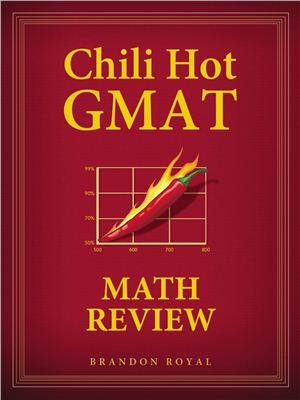Maven Publishing, 2010. - 212 pages.
CHILI HOT GMAT: MATH REVIEW will help readers develop the skills and mindset needed to score high on the quantitative section of the GMAT exam. Each hand-selected problem comes with a Classification, Snapshot, and Chili Rating. Classification serves to identify each problem according to category or sub-category. Snapshot highlights why that particular problem was chosen, including the underlying problem-solving principle or strategic approach. Chili Rating helps candidates gauge the estimated difficulty level of a given problem. A single chili indicates that the estimated difficulty level of a given problem is "mild" (500 to 590 difficulty level), two chilies spell "hot" (600 to 690 difficulty level), and three chilies signal "very hot" (700 or above difficulty level). By studying problems of varying difficulty, candidates will lea to maintain discipline on easy but tricky math problems and also to exercise flexibility when deciding on multiple approaches and time-saving shortcuts for use in tackling harder, more involved problems.
Note to readers: This book contains the excerpted math sections from the parent title Chili Hot GMAT: 200 All-Star Problems to Get You a High Score on Your GMAT Exam.
CHILI HOT GMAT: MATH REVIEW will help readers develop the skills and mindset needed to score high on the quantitative section of the GMAT exam. Each hand-selected problem comes with a Classification, Snapshot, and Chili Rating. Classification serves to identify each problem according to category or sub-category. Snapshot highlights why that particular problem was chosen, including the underlying problem-solving principle or strategic approach. Chili Rating helps candidates gauge the estimated difficulty level of a given problem. A single chili indicates that the estimated difficulty level of a given problem is "mild" (500 to 590 difficulty level), two chilies spell "hot" (600 to 690 difficulty level), and three chilies signal "very hot" (700 or above difficulty level). By studying problems of varying difficulty, candidates will lea to maintain discipline on easy but tricky math problems and also to exercise flexibility when deciding on multiple approaches and time-saving shortcuts for use in tackling harder, more involved problems.
Note to readers: This book contains the excerpted math sections from the parent title Chili Hot GMAT: 200 All-Star Problems to Get You a High Score on Your GMAT Exam.

